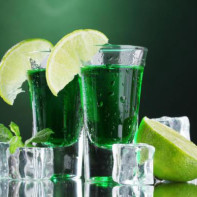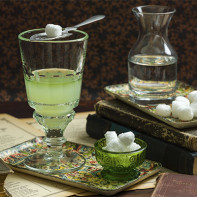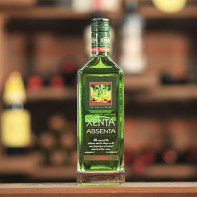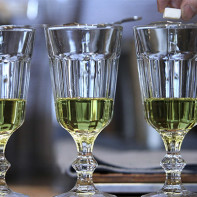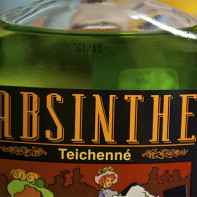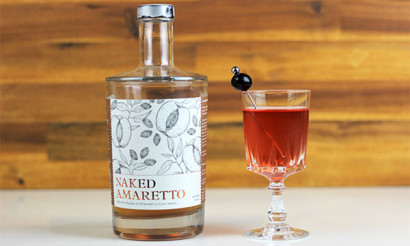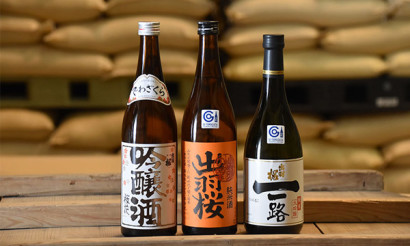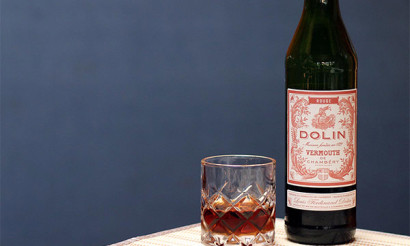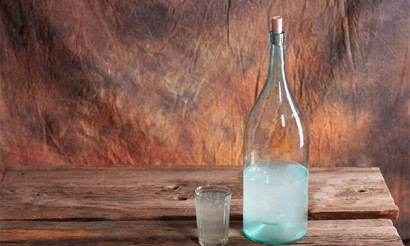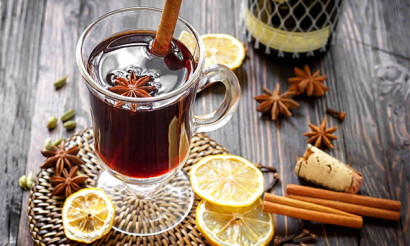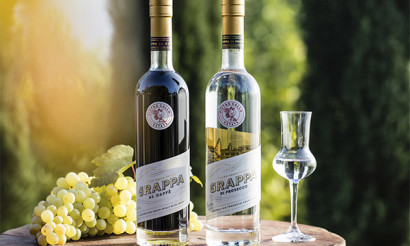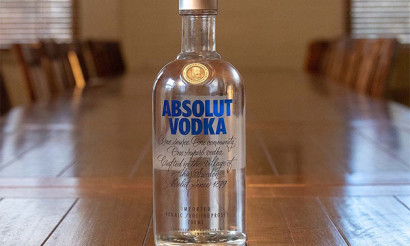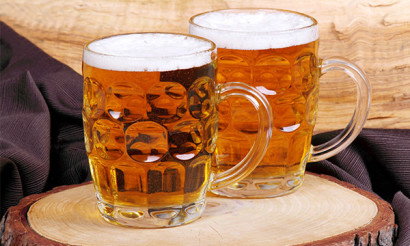How to drink absinthe properly.
Amazing emerald drink with alcohol content up to 89.9% was created as a medicine. The authorship is attributed to several people, but historically the names of Pierre Ordiner as the developer of the exact recipe and Henri Dubier as the entrepreneur who set up the industrial production. He thanked his friend who helped him open the distillery in a peculiar way and named the brand Pernod, after his like-minded friend. Absinthe is still produced under this name.
- What is absinthe
- History of the drink's distribution
- Types of
- Production technology
- Popular Brands
- Selection criteria for the drink
- The right glassware for absinthe
- How to drink absinthe properly
- What to snack on
- Can I drink it straight?
- Cocktails with absinthe: recipes
- Sweet contrast
- Honey
- Goodbye, Johnny
- Fizzy absinthe
- The benefits and harms of absinthe
What is absinthe
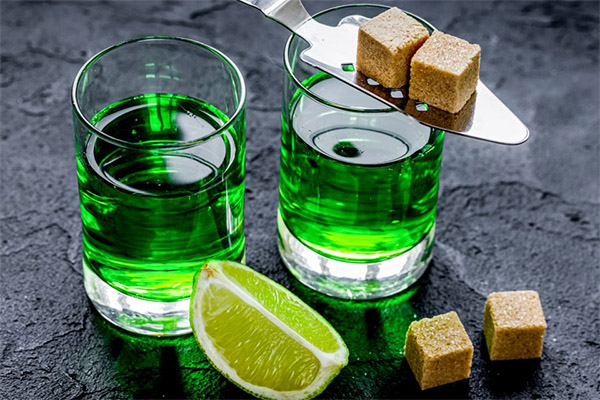
A drink with an alcohol content of between 75 and 89.9% is infused with a whole bouquet of herbs. The base is the bitter wormwood. It contains hallucinogenic substance thujone, which the French bohemia liked. In the original version, the wormwood was soaked in alcohol, which enhanced the effect. In the modern version, such a recipe is forbidden and alcohol is replaced by water. In addition to wormwood, the herbal collection includes:
- anise;
- chamomile;
- angelica;
- coriander;
- hyssop;
- 2 each of mint and wormwood;
- licorice;
- fennel;
- parsley.
The composition is due to the fact that originally, according to one version, absinthe was composed by the Enrio sisters as a drug to relieve nervous tension.
The green color of the liquid is due to the chlorophyll present in it. To keep it from breaking down in the light, absinthe is bottled only in dark bottles.
Interesting: The drink's admirers call it a green fairy, while its detractors call it a witch.
Over time, fanatical absinthe lovers develop an addiction, and the body constantly demands new portions. During researches it has been found out that the hallucinogenic factor is greatly exaggerated, also the strong excitatory effect leading to uncontrollable aggression has not been confirmed. Most likely, it is a matter of psychological attitudes, multiplied by superstitions and myths, circling around the favorite drink of bohemians.
History of dissemination of the drink
The debut of absinthe took place at the end of the XVIII century. The whole next century passed under the motto of personal freedom and enjoyment of the new drink. During the colonial wars, absinthe was given to French soldiers as a prophylactic against malaria and intestinal diseases and to disinfect drinking water. The result was unexpected. Cases of paranoid schizophrenia increased in the troops. At the same time, the fashion for the new drink crossed the borders of the country, going to Algeria and Europe.
France was on the crest of the absinthe craze. It provoked the development of not only nervous disorders, but also destroyed the liver. According to the evidence of contemporaries, many young girls suffered from cirrhosis of the liver caused by adherence to the new drink. A small amount allowed to quickly achieve intoxication and light hallucinations almost without damage to the figure. The specific taste interrupted the more subtle bouquets of wine and champagne.
Until 1860 wormwood vodka was quite expensive and was considered the drink of aristocrats and the rich. With the advent of cheaper types it became available to other segments of the population.
The reasons for the rapid popularization of absinthe were:
- Increased unemployment, causing widespread depression.
- Mass destruction of vineyards by phylloxera and the sharply increased cost of wine.
- The affordability of the new kind of alcohol and its frugality due to the high degrees.
Absinthe production grew tremendously. Because of its poor quality and use in undiluted form, cases of nervous breakdowns, schizophrenia and outbursts of aggression were more frequent. By the beginning of the XX century there was talk about the prohibition of free sale of the drink. In 1915 a law on prohibition of wormwood vodka production was adopted. It was legalized only in 2004 with the proviso that the thujone level in the drink should not exceed 10 mg/kg.
Types
Unlike cognac, champagne or vintage wine, absinthe's composition and recipe are no secret. Not only that, but there is no specific region that is the reference producer. It is almost impossible to sort absinthe by type; there is only a rough gradation on a few grounds.
Color
Classical drink is green. Then begin the variations, depending on the type of herbs, the presence of additives and dyes. Since there are no standards, each kind has a right to exist and a circle of admirers.
The bright emerald hue is often achieved with special additives. The real cause of coloring, chlorophyll, quickly breaks down and fades, leaving a yellowish hue.
Blue and yellow are also said to be dyes. Red is achieved by adding pomegranate juice to the main compound. Brown and black absinthe is obtained when the leaves and stems of wormwood are replaced by its roots. The strength and characteristic flavor remain, and if Acacia Katehu extract is added to the recipe, sweet berry tones appear.
Transparent drink gives away the minimalism in the recipe, where there are only necessary ingredients.
Strength
It was a weighty advantage in the eyes of poor students, not richer artists and other representatives of creative professions. According to it absinthe is divided into strong, with a value of up to 65%, and extreme, which is obtained by distillation and combining with herbal tincture.
The concentration of thujone
Initially it was high and directly influenced the rapid intoxication. This led to a ban on the sale of absinthe, and later strict standards for its content in the drink were introduced. The standard content of the substance was recognized to be within 10 mg per liter. Nevertheless, many countries have their own tolerances.
The Czech Republic and Switzerland have the freest approach to the norms, where they are 2.5 times higher than the international standard. In France, drinks that imitate the taste of real absinthe have been created with zero thujone in them.
Production technology
There are two types. The first one is distilled from an herbal infusion and is considered higher in class and quality. The second is simply diluted with additives without additional manipulation of distillation and purification and is considered cheaper.
Popular Brands
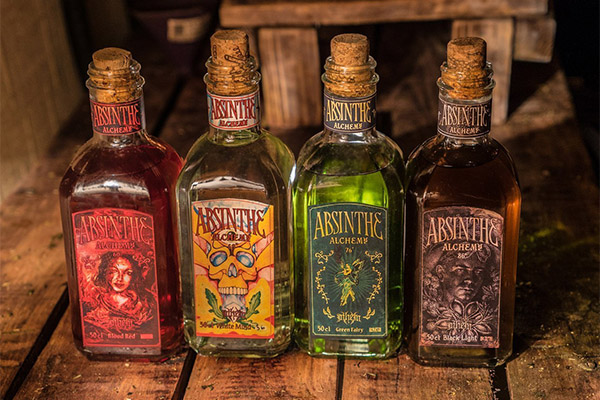
Although the absinthe recipe does not belong to one country, the best brands are considered Swiss, German, French, Czech, Italian and Spanish. Popular brands:
- Ricard;
- Pastis;
- Hypno La Fee;
- Fruko Schulz;
- Jacques Senaux;
- Tunel;
- Xenta;
- Mr. Jekyll.
Criteria for choosing a drink
If this is your first acquaintance with absinthe, you should entrust the matter to professionals and accept a cocktail or a glass with a clean drink from the hands of an experienced bartender with a good reputation. In the case of buying and tasting at home, you should approach the process responsibly. Before paying a lot of money, you should inspect the bottle and get acquainted with the inscriptions on it.
When choosing a real wormwood vodka, you should pay attention to the presence of the designation thujone-free or absinthe refined. This means that the absinthe is refined and has no thujone at all.
The strength of the drink must be no less than 70 percent, otherwise it is just a wormwood liqueur. The word "distilled" suggests the classical method of production and guarantees high quality.
The right glassware for absinthe
For the enjoyment of the drink, the aesthetic component is very important. It is enough to remember that originally it was an expensive kind of alcohol and required an appropriate attitude.
A classic absinthe glass has a volume of 250 ml and a medium-length stem. The walls are thick and crack-resistant, because often the drink is lit before serving, and the difference in temperature causes the glass to break. The best shape is considered to be conical, widening towards the edges.
An ordinary cut glass is acceptable, but some of the charm will be irretrievably lost. A special metal spoon is sure to come with a bottle of high-quality, expensive liquor. It is designed to hold a piece of sugar, through which a thin trickle of cold water is poured into a flute with a drink.
How to drink absinthe properly
The drink belongs to the aperitifs, it stimulates the appetite and is served before the main dishes. In the classic version, it is a whole ritual. There are several ways and each of them is considered correct.
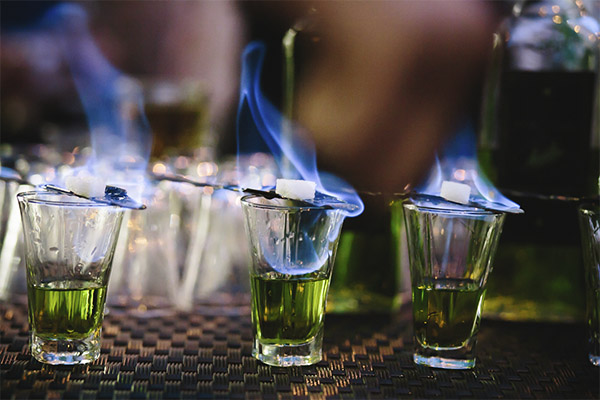
- The classic or French version implies the obligatory use of sugar. A small spoon with holes is placed on the edge of the glass with 1 fifth of the absinthe volume, on which a piece of raffinate is placed. Very cold water is gently poured through it to the ratio of 5:1 with absinthe. At the same time, the wormwood vodka becomes cloudy, which is a sign of the settling of essential oils. Now you can enjoy the drink.
- The Czech method involves very little dilution, which automatically increases the degree. The same as in the classic method, there is a spoon and sugar. But it is impregnated with absinthe beforehand and set on fire. Gradually melting, it drips into the glass in spectacular drops. Before drinking, a little chilled water or juice is poured into the glass.
- The Russian method first prepares a sugar syrup at the rate of 1:2. After the crystals have dissolved in water, the solution is poured into the glass with the absinthe.
- The longest method is called "two glasses". First, 30 ml of wormwood vodka are poured into a small, narrow shot glass and placed in a larger glass. A thin stream of almost ice-cold water is poured into a smaller container until the mixture overflows and clear water remains in the shot glass. It is removed and the drink is considered ready to drink.
- The bar method is similar to the Czech method, only the drink itself burns, and the sugar on the spoon simply melts in its flame.
- Gentle involves filling the glass in layers with water and absinthe, which is at a medium level. Its strength is softened by the water layers that come before and after it. The difficulty lies in carefully adding the liquids without mixing them.
- Citrus suggests an orange slice, peeled from the inner partitions. It is carefully sprinkled on both sides with sugar mixed with cinnamon. Absinthe in a shot glass is lit, and the slice is held over the flame with tongs. The juice is gradually squeezed out, dripping into the glass and mixing with the drink. Once the combustion is complete, the tasting can begin.
- The harsh method consists of a single consumption of a voluminous portion of 100 ml. Half is drunk in a gulp, the second is gradually savored in small sips. In order not to burn yourself with alcoholic fumes, you need to hold your breath a little after the second part, and then take your time to snack on a slice of candied lemon.
- The Cheshire cat is prepared spectacularly. A finely crumbled ice is placed at the bottom of the glass, then green absinthe is gently poured to 1⁄4 of the height of the container. When the ice starts to melt, a third of the glass is filled with apple juice.
- The merry milkman is unpredictable in action, as the ingredients are absinthe, whiskey, and milk.
What to snack on
Aperitifs are served before meals. In order not to overwhelm the appetite, only light snacks in the form of seafood, unsweetened fruit, citrus fruits are allowed. Sometimes you can put a plate with pieces of bitter chocolate.
It is worth bearing in mind that the herbal component and essential oils successfully mask the strength of the drink. To avoid a hangover in the morning, it is recommended not to exceed a dose of 30 ml. It is quite enough to enjoy the taste of a bohemian drink and awaken your appetite. And you shouldn't count the fairies, otherwise in the morning the hangover will be brutal, and the mood will sink.
Is it possible to drink it in its pure form
The drink is strong and requires careful handling. Experienced connoisseurs drink it undiluted, cooled to almost zero temperature. This aperitif is served only in small quantities, no more than 30 ml, in narrow shot glasses with thick walls.
Cocktails with absinthe: recipes
Colored varieties of absinthe look very effective in cocktails. They are well combined with other types of alcohol and juices.

Sweet contrast.
In the composition:
- freshly squeezed apple juice - 150 ml;
- berry or mint liqueur - 20 ml;
- absinthe - 50 ml;
- crushed ice.
First the liquor is poured on the bottom, then the juice and the last layer of wormwood vodka, adding ice. As you drink it, there is a succession of tastes from the sizzling alcohol to the sweetness of the liquor.
Honey
An incomparable combination of honey and lemon syrup with scaldingly strong absinthe delights connoisseurs of fine flavors. To make it you need to mix the juice of half a lemon and a spoonful of honey, spread the mixture on the bottom of the glass and then pour the drink. Drink it in a gulp, without lighting it.
Goodbye, Johnny.
The original combination of absinthe and cognac is softened with egg white. Twenty ml. of the drink and egg white are beaten up in a shaker with ice cubes and poured into a cocktail glass. A small pinch of cumin is sprinkled on top.
Fizzy absinthe
A multicomponent cocktail is spectacular and easy to make. You will need:
- 30 ml of absinthe;
- 20 ml each of orange juice and lemon juice;
- 10 ml each of cognac and pomegranate syrup;
- egg white;
- soda;
- ice.
All ingredients except the last one are quickly shaken in a shaker, poured into a tall glass and topped off with soda on the wall.
Absinthe Benefits and Harms
Wormwood vodka has antibacterial action, perfectly copes with the neutralization of E. coli, supports during epidemics. Improved appetite and digestive functions, a small sedative effect, but only in very small doses - no more than 30 ml per day is recorded.
In large quantities it can cause mental disorders, alcohol dependence, disorders of the nervous system, depression.
A symbol of bohemian life, absinthe will perfectly complement a party, create an entourage of a refined society of creative people. But it is worth remembering the insidious properties of thujone and consume it in moderation, enjoying the rich taste and getting aesthetic pleasure.
«Important: All information on this site is provided for informational purposes only. for informational purposes only. Please consult with your health care professional before using any of the recommendations. specialist before using any of the recommendations. Neither the editors nor the authors shall be liable for any possible harm caused by materials."

